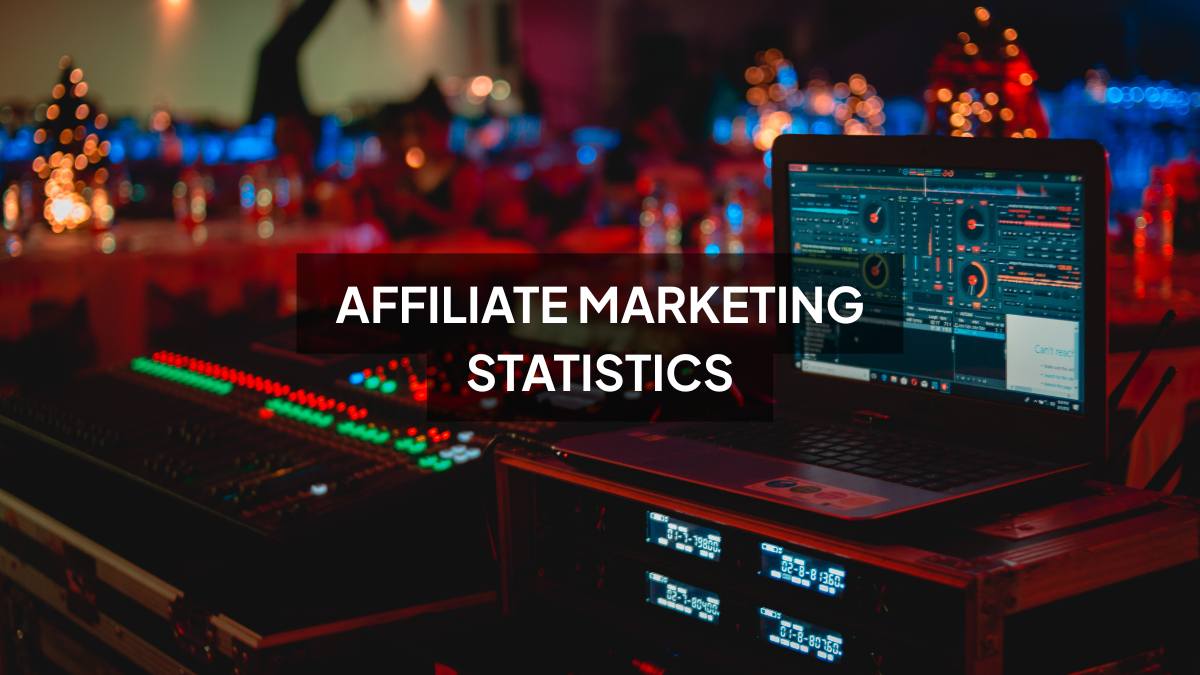Introduction
Affiliate marketing in 2025 is worth over $37 billion worldwide, and honestly, it doesn’t look like it’s slowing down anytime soon. Around 81% of brands are already using it in some way, which makes total sense because it’s one of the easiest ways to scale sales without taking big upfront risks. The catch? The industry moves fast. Stats from even a couple of years back don’t really tell the full story anymore. That’s why having the latest affiliate marketing data is so important right now. In this article, I’ll break down the newest numbers on market size, ROI, adoption, key trends, and where things are headed next.
Table of Contents
Overview of the Global Affiliate Marketing Industry
Affiliate marketing didn’t just appear overnight, it’s been around for decades, starting with simple referral programs and slowly expanding into a massive global industry. What keeps it relevant in 2025 is how flexible it is. Brands only pay when a result actually happens, whether that’s a purchase, a signup, or a lead. That “pay for performance” structure is why e-commerce stores, SaaS companies, and even financial services lean into it so heavily. On top of that, the model scales nicely. Affiliates can drive traffic through blogs, social media, email, or paid ads, and it all feeds into measurable growth. It’s not perfect, but it’s still one of the most dependable digital channels out there.
Also Read: Affiliate Marketing vs Performance Marketing
Affiliate Marketing Statistics 2025
The affiliate marketing industry in 2025 is sitting at around $37 billion worldwide (Source), and it’s become impossible to ignore for most brands. In fact, more than 80% of companies now use affiliates to push sales or generate leads. North America is still the biggest player, making up over 40% of the market, and the US alone is expected to hit close to $12 billion in spend this year. What’s important is that the space isn’t slowing down. With a steady 8-10% annual growth rate, it’s proving itself as one of the more reliable channels in digital marketing. Here’s a closer look at the numbers shaping things right now.
Market Size and Spend
- 2025 global value: $37 billion (Source)
- Affiliate Marketing Expected to Reach $27.78 Billion by 2027 (source)
- US spending: ~$12 billion in 2025, up almost 12% from last year. (Source)
Growth and ROI
- Annual global growth: 8-10% CAGR (Source)
- Brands see $6.50 to $15 return for every $1 spent (Source)
- Roughly 16% of all US ecommerce sales come from affiliate marketing (Source)
Adoption and Channels
- 80%+ of brands are active with affiliates, especially ecommerce, SaaS, and finance (Source)
- Facebook ads still play a big role, but blogs and SEO bring steady organic results (used by about 69% of affiliates) (Source)
- Mobile traffic drives anywhere from 50% to 62% of visits (Source)

Enroll Now: Advanced Digital Marketing Course
Leading Networks and Models
- Amazon Associates controls a massive 43-46% market share (Source)
- The Cost Per Sale (CPS) model is still the most common
Key Trends
- Around half of affiliates now use automation or AI tools to improve performance
- Asia-Pacific is the fastest-growing region, with 13-14% CAGR (Source)
- Using video can lift conversions by about 49% (Source)
Fraud and Losses
- Affiliate fraud is expected to cost about $1.4 billion in 2025, mostly from cookie stuffing and bot-driven traffic (Source)
The takeaway is simple: affiliate marketing keeps growing, the returns are strong, and while fraud is still a concern, the upside makes it worth the investment for most businesses.
What These Stats Mean for Marketers
Looking at the numbers, the first thing that stands out is stability. An 8-10% growth rate every year might not sound explosive, but it’s exactly the kind of steady curve most marketers want to see. It means the industry isn’t a fad, it’s becoming part of the core mix. The ROI, anywhere between $6.50 and $15 for every $1 spent, explains why so many brands keep doubling down on it. Few other channels can compete with that level of efficiency.
Another clear signal is where the traffic is coming from. With mobile now driving over half of affiliate visits and SEO still powering close to 70% of affiliate strategies, the smart move is to focus on mobile-friendly experiences and long-term content. The only big caution is fraud, roughly $1.4 billion lost in 2025, so having the right tracking, vetting, and fraud detection in place is crucial if you want those strong ROI numbers to actually stick.
Also Read: Google Ads Statistics
Future of Affiliate Marketing (2025-2027)
Look, the next couple of years feel less like a surprise and more like a slow, obvious shift. Asia-Pacific is where the biggest upside lives, think 13-14% CAGR, so if you’re only focused on North America, you’re missing growth. Automation and AI-driven tools are already doing heavy lifting for affiliates: not just for scaling, but for catching the sketchy stuff before it drains budgets. Video keeps winning attention, short clips, product demos, influencers, and that’s why conversions jump (nearly 49% lift when done right). Bottom line: the channel will grow, formats will change, and the clever teams that mix content and tech will win.
TL;DR: Quick Summary of Affiliate Marketing in 2025
- Global value: $37.3 B in 2025.
- US spend: about $12B, up ~12% from 2024.
- Growth: 8-10% CAGR overall.
- Strong ROI: roughly $6.50-$15 per $1 spent.
- Affiliate share of US ecommerce: ~16%.
- Adoption: 80%+ of brands use affiliates.
- Big network: Amazon Associates has 43-46% market share.
- Mobile = 50-62% of affiliate visits.
- SEO/blogs used by 69% of affiliates.
- Fastest region: Asia-Pacific (13-14% CAGR).
- Video lifts conversions by about 49%.
- Fraud losses: estimated $1.4B in 2025.
Also Read: 15 Most Important SEO Statistics
FAQs: Affiliate Marketing Stats 2025
What is the global affiliate marketing industry worth in 2025?
Right now, the industry is valued somewhere around $37 billion. It’s grown into a huge piece of digital marketing, not just a side hustle channel anymore. E-commerce, SaaS, finance, health… everyone’s in on it. The money flowing in shows it’s not slowing down anytime soon.
How much do brands spend on affiliate marketing in the US?
In the US, spend should touch about $12 billion by the end of 2025. That’s up nearly 12% from last year. North America pulls in over 40% of all global revenue, so what happens here really sets the tone for the whole affiliate industry.
What ROI can businesses expect from affiliate marketing?
Most companies earn between $6.50 and $15 for every dollar they put into affiliates. The range is wide, sure, but that’s still one of the best returns you’ll find in digital. The trick is keeping partners clean, tracking tight, and offers relevant enough to actually convert.
Which networks dominate affiliate marketing in 2025?
Amazon Associates is still the big one, holding around 43-46% of the global market. No surprise there. The reach and trust Amazon has makes it hard to beat. That said, smaller networks focused on niches can sometimes perform better if you know your product and audience.
What are the biggest challenges like fraud, and how can they be managed?
Fraud’s a big headache, costing roughly $1.4 billion in 2025. Cookie stuffing, bots, fake leads, all the usual tricks. The fix isn’t glamorous: vet affiliates carefully, monitor traffic patterns, use fraud detection tools. Ignore it, and those shiny ROI numbers won’t hold up for long.

